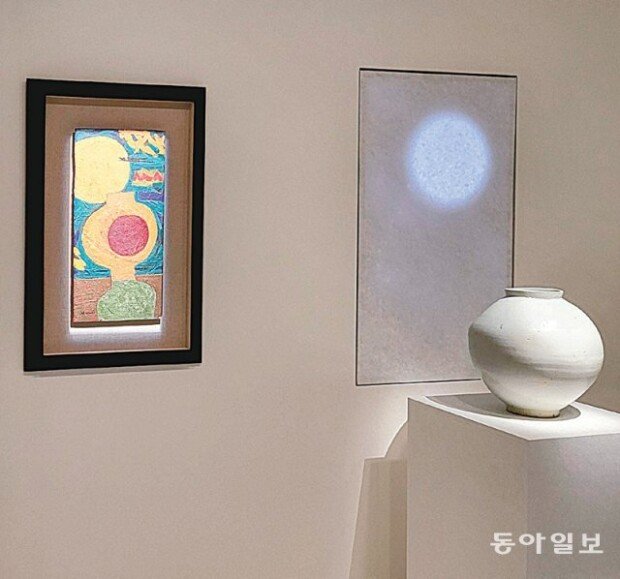Special exhibition on Lee Kun-hee’s collection
Special exhibition on Lee Kun-hee’s collection
Posted May. 19, 2022 08:05,
Updated May. 19, 2022 08:05

The “Thinking Woman (1992)” and the 6th-century national treasure “Ilkwangsamjonsang” are displayed side by side at the special exhibition on Lee Kun-hee collection, which kicked off on April 28 at the National Museum of Korea. The thinking woman propping her chin on her hand and the Buddha statue meditating with his eyes closed strangely connect with each other. The two artworks impressively capture the moment of thought, transcending the gap of 1,400 years. The phrase on the wall reads, “Human beings constantly think about the essence of life because they do not know much and fear much.”
The collection of Lee Kun-hee is so vast in type and amount that it is difficult to group them into a specific era or culture. This is why the museum thought deeply about the intention of the collector in collecting cultural heritages of the East and the West. After much consideration, the museum came up with the keyword, “connection” for the exhibition. They decided to show how cultural heritages from the past constantly inspired modern artists.
For example, the museum placed “White Porcelain Moon Jar” from the 18th century under a wall illuminated with a full-moon shaped light, and displayed Kim Whan-ki’s “Work (1950s),” which depicted the moon and a moon jar, next to it. “I wanted the audience to feel the world of art that runs through the time and culture,” said Lee Hyun-sook, the museum’s exhibition designer.
Also drawing attention is the exhibition room displaying Joseon era’s chaekgado, an illustration of stationery and antiques on a bookshelf. The room not only displays pictures, but also decorates the wall with a bookshelf filled with potteries. Chaegado, which gained popularity as court painting in the late 18th century, became a style of folk painting in the 19th century, giving vicarious pleasure to ordinary people, who could not afford luxurious antiques. Through the exhibits on the wall, visitors can better understand the meaning of chaekgado in three dimensions.
always99@donga.com
Headline News
- ‘Korean THAAD’ L-SAM successfully developed in 10 years
- Pres. Yoon’s approval rating falls back to 10% range
- ‘Commercial Code amendments could harm capital market amid uncertainty’
- Prosecutors conduct search and seizure for industrial complex intervention allegations
- Democratic Party pushes amendment for special prosecutor







